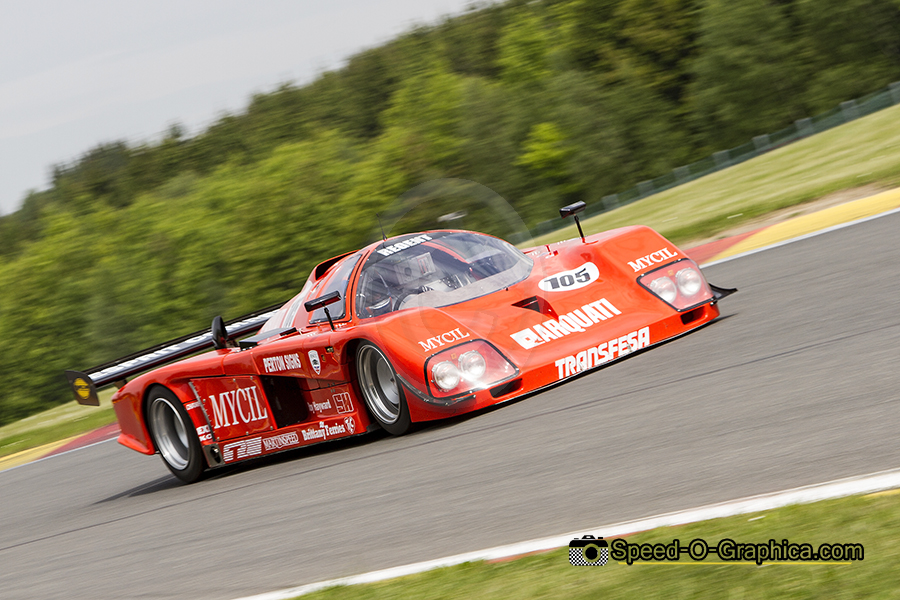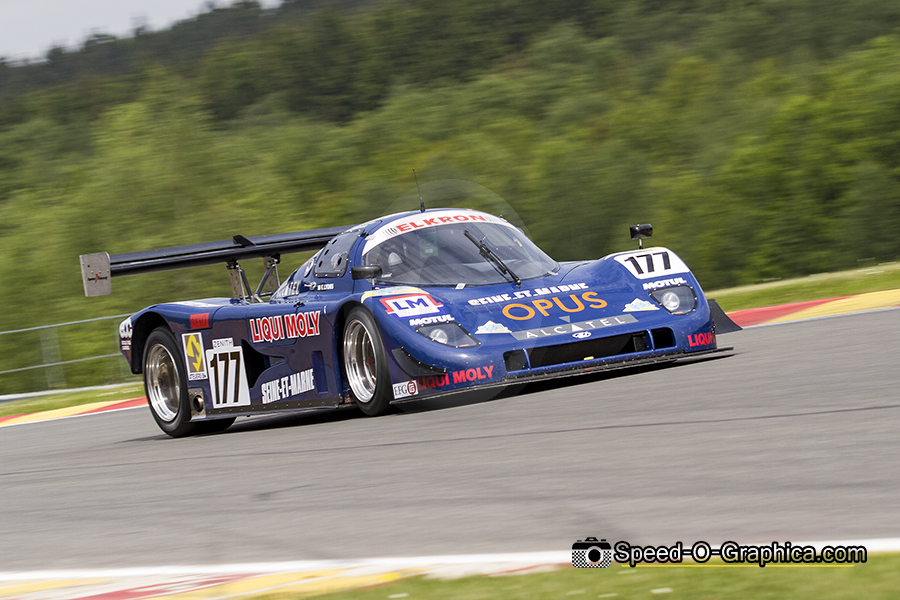
By Marcel Hundscheid/Speed-O-Graphica
In this second part of our Group C deep dive we look back to several cars and constructors that raced in the World Sportscar Championship from 1983 until 1991. We kick off part one of the cars and constructors with ADA Engineering from the UK.
ADA Engineering
Chris Crawford and Ian Harrower created ADA Engineering in 1977, initially starting as an engineering design and consultancy. In 1985 they ran the ex-World Gebhardt C2 in the World Endurance Championship, picking up a class win at the 24 Hours of Le Mans in 1986.
Crawford and Harrower decided to build their own car in 1987. Chassis 02 was followed by 03 in 1988 that was entered for the World Sportscar Championship. Ian Harrower entered the 1988 Le Mans 24 Hours with Jiro Yoneyama and Hideo Fukuyama from Japan. They finished 18th overall and claimed an impressive second place in the C2 category.

Pictured here is chassis 88-02 seen during the Spa Classic back in 2014. This car was built in 1987 and debuted at the Brands Hatch 1000 kms. In a practice session for the Kyalami 1000 kms in South Africa the car was quickest driven by Michael Briggs and Mario Hytten. Due to a huge starting accident the car was destroyed. The car was rebuilt back in 1988 with some modifications resulting in ADA C2-02B.
Alba
Alba was a small Italian company based in Moncalieri near Turin and founded by Giorgio Stirano 1982. Stirano was a former engineer from Osella.
Alba created the AR2 for Group C Junior, powering it with a Carma FF four-cylinder 1.8 turbo engine and placing it in carbon fibre composite chassis. Martino Finotto and Carlo Facetti debuted at the 1983 WSC event in Silverstone, scoring a instant victory in Group C Junior. Another victory at the Nürburgring was followed with podium finishes in the UK and South Africa and resulted in the Group C Junior championship crown.
In 1984 the Alba-Ford AR3 appeared, followed by the AR4, AR5 and AR6, which were all deemed failures. The successes scored in 1983 were never repeated and an 8th place at the Mugello 1000 kms in 1985 was their best result.
Years after the appearance of the AR6, the Alba AR20 was launched. On the face this car resembled its predecessors, although underneath the car was built around the huge Motori Moderni 3.5 liter V12, designed by Carlo Chiti. The AR20 suffered with the huge weight of the V12 and a lack of performance as the engine barely managed to produce 560 hp. Marco Brand and Gianfranco Brancatelli raced the AR20 in the World Sports Prototype Championship, but didn’t find success. Pictured below is Alba AR2-001 seen at the Spa Classic in 2016.

ALD Automobiles Louis Descartes
Louis Descartes founded Automobiles Louis Descartes in 1983, commonly known as ALD. Descartes himself raced prototypes at the 24 Hours of Le Mans from 1985 to 1991 and dreamed of building his own prototype. He teamed up with engineer Jean Paul Sauvée in 1983, planning to convert a Lola T298 into a prototype with a closed cabin, but the project was abandoned.
Sauveé designed the ALD01 as a brand new car using a BMW 6-cylinder 3.5 engine. The ALD01 entered the 24 Hours of Le Mans in 1985, driven by Descartes, Jacques Heuvlin and Dany Hubert. Although the car finished, it was not ranked after it failed to complete the requisite distance having struggled with mechanical issues.
The ALD02 was based on the earlier ALD01 and was entered in the European races of the world championship. The car suffered from technical problems and at the 24 Hours of Le Mans in 1986 was abandoned on lap 41. Sauvée designed a new car for the 1987 season known as the ALD03. This car was designed around the windshield of a Porsche 962 and originally equipped with a 2.0 litre turbo engine from Audi. Results were catastrophic and it was decided to switch the Audi engine for a BMW M1 motor. During the 24 hours of Le Mans the car made it to the finish line for the first time.
In 1988 the new ALD04 appeared, debuting at Silverstone. For 1989 ALD launched three new cars, including the ALD05 and ALD06 as well as the ALD C289. This car was designed around a carbon chassis and equipped with a Ford Cosworth DFL engine. Despite all efforts, ALD didn’t manage to gain success with this car.
During the 1989 and 1990 editions of the 24 Hours of Le Mans the car never made it to the finish. In 1991 the ALD C91 appeared with a 3.5 liter Ford engine and again the car had to retire from the race early. As a result of the accidental death of founder Louis Descartes, ALD ceased operation on December 27th, 1991, just three days before his 40th birthday.
Pictured below is ALD C289-02 at the 2015 Spa Classic.
In the next episode we will continue our dive into the constructors and cars that powered Group C racing.
Marcel Hundscheid

The post Group C: The Rise and Fall of the Golden Age of Endurance Racing: Cars and Constructors Part 1 appeared first on Motorsport Retro.